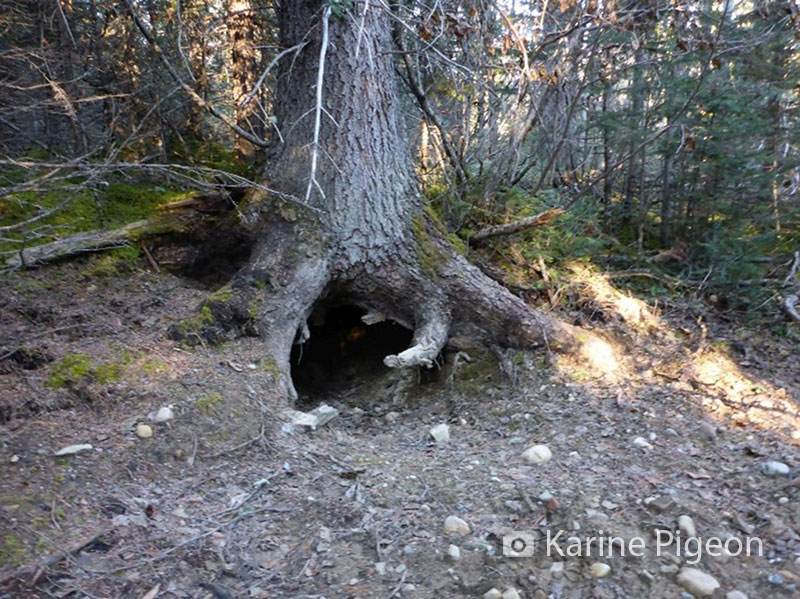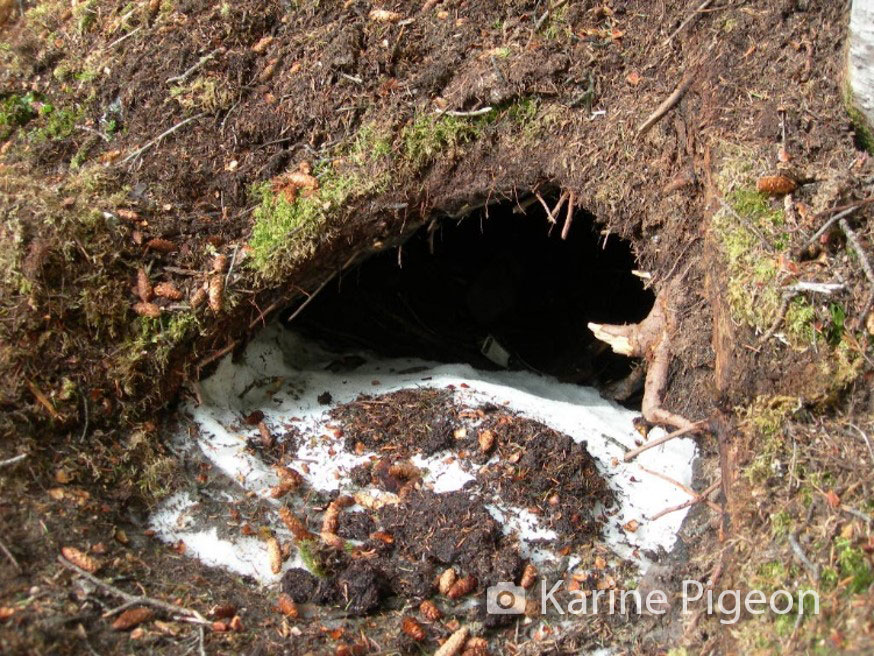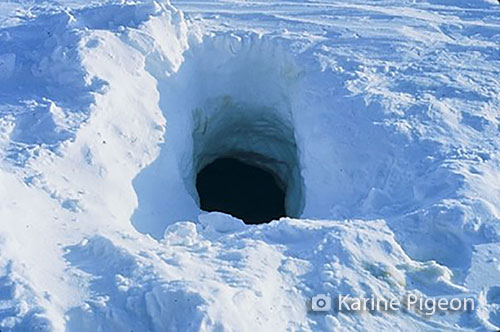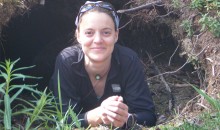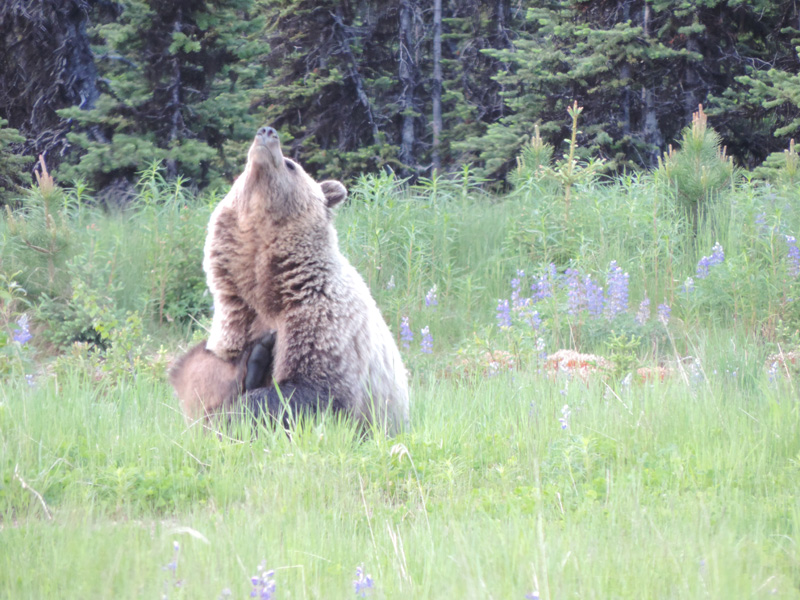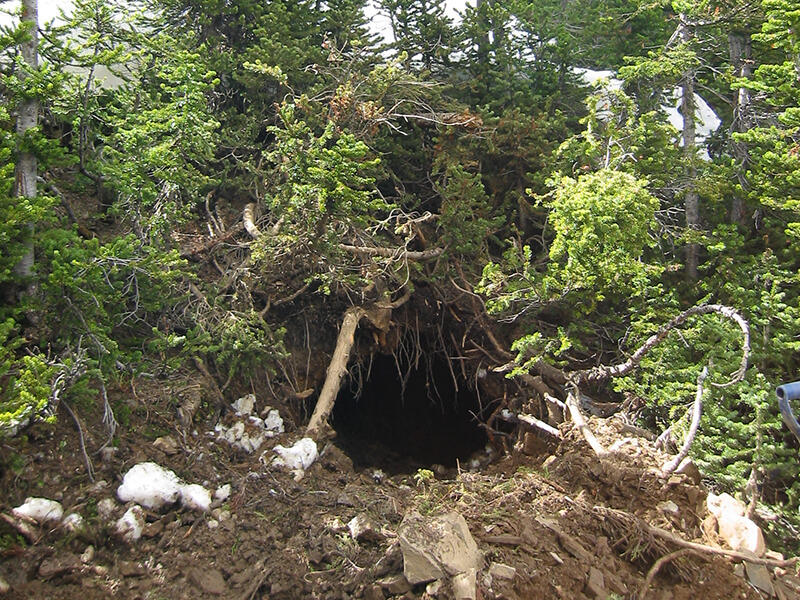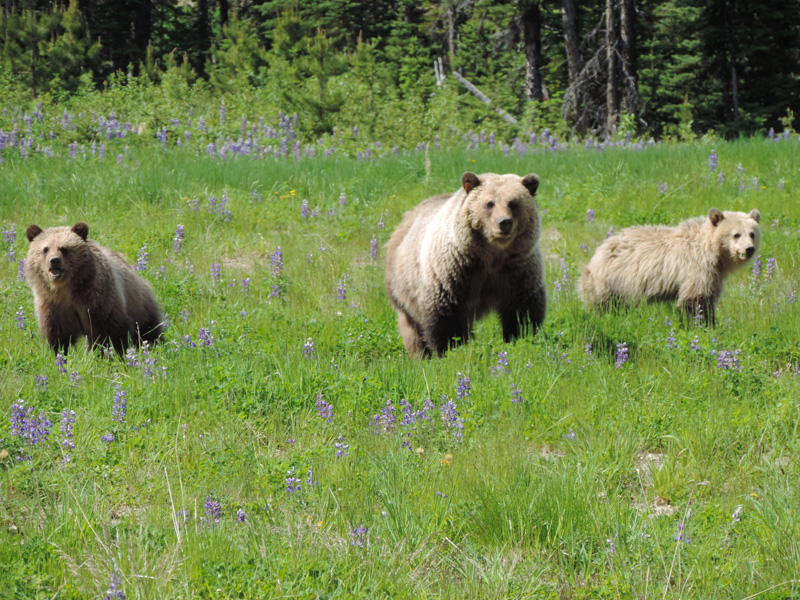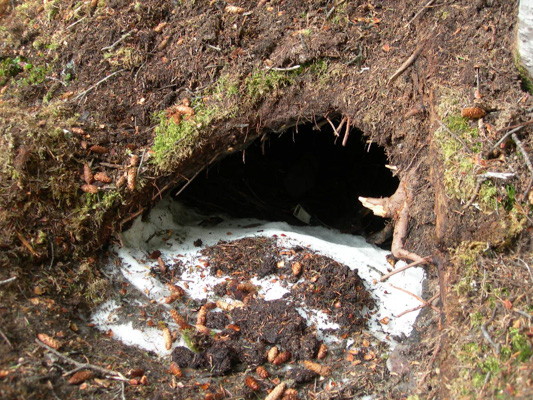Karen Graham brought together decades of our research, in particular, Dr. Pigeon’s PhD work on grizzly bear denning. It accompanies a brochure and a presentation.
Summary
This report summarizes information on the general den ecology of grizzly bears along with information specific to grizzly bears from the boreal forest of west-central Alberta and includes den dates collected from 1999-2018 on 139 grizzly bears (fRI Unpublished data), den habitats collected from 79 den sites between 2000-2011 (Pigeon et al. 2014) and den site characteristics collected from 42 dens between 2001-2012 (Pigeon et al. 2016a). Management recommendations for forestry workers and planners are also provided.
Many consider grizzly bears as the classic hibernator because they spend months without eating, drinking, defecating, or urinating while in their den. Others believe it is more appropriate to view grizzly bears as experiencing periods of torpor during their winter dormancy (Jansen et al. 2016) and are not “true” hibernators. They can be alert quickly if disturbed and den abandonment can occur. Den abandonment is typically a result of human disturbances near a den. A disturbance that only wakens a bear but happens repeatedly could result in an accelerated loss of fat reserves and reduced fitness. For females with new cubs, this drain could reduce her fitness as well as the quality and/or quantity of milk leading to smaller and/or less healthy cubs. Disturbances that cause the mother to become agitated and move about inside the den could dislodge the cubs from a warm location against the mother or interrupt nursing which could detrimentally impact the cub’s growth and survival. Newborn cubs are unable to stand until they are one month old (Tumanov 1998) so if a female abandons her den soon after giving birth, there is little chance that her cub(s) would survive. Therefore, it is important to avoid disturbing a denned grizzly bear.
Grizzly bears in west-central Alberta spent on average 7 and 8 days in the den area (within 500 m of their den) prior to and after den entry and exit respectively but there was much variation with some bears spending up to 31 days prior to den entry and up to 45 days after den exit. During these times they may exhibit physiological lethargy. Ten percent (n=169) of den entries occurred immediately (within the day) after arrival in the fall and 16% (n=127) left their dens immediately after den emergence in the spring. The earliest arrival at the den area occurred on 14 October.
Pregnant females were the first to enter their dens in the fall and the last to exit in the spring. Adult males and subadult grizzly bears were the last to enter a den in the fall and the first to exit in the spring and nonpregnant females and females with yearlings or older fell in between pregnant females and males and subadults. A heavy snowfall has been linked to den entry in some areas but in west-central Alberta there appeared to be other factors influencing the onset of denning such as food availability. Weather factors, specifically warm temperatures, was associated with den exit dates. The mean den entry date for all age and reproductive classes in west-central Alberta was 12 November, with the earliest on 20 Oct and the latest on 19 December. The mean den exit date was 12 April with the earliest on 5 March and the latest on 12 May.
Using remote sensing products along with food models and Geographic Information Systems (GIS) layers, Pigeon et al. (2014) examined grizzly bear den site selection in west-central Alberta. Their results showed that male and female grizzly bears selected similar habitats for their dens (n=79) from 2000-2011. At the broad scale (5-10 km), grizzly bears selected sites on slopes in dry, open conifer stands and in habitats associated with sweet vetch (Hedysarum alpinum), which is an important early spring and late fall food for grizzly bears. Within these stands, dens occurred in areas with low road densities and dense conifer, presumably for concealment and were not within 150 m of habitats associated with Vaccinium spp. or buffaloberry. Dens were typically located at least 300 m from a well site and 150 m from a road. Bears appeared to avoid constructing dens in water saturated areas. The relative probability of den site selection doubled when the terrain slope increased from 10° to 60°. The aspects of dens were variable, likely a result of small-scaled terrain features that maximized protection from the wind and snow accumulation. No dens were in young (0-5 years) harvest blocks. The relative probability of den selection dropped by 30% when road densities increased from 0 to 0.6 km per km2 and dropped by nearly 70% at road densities of 1.2 km per km2. At road densities of 2.0 km per km2, den selection was nearly zero. We found dens ranged in elevation from 795 m in the boreal forest to 2284 m in the mountains with an average of 1705 m.
A Resource Selection Function model was developed for west-central Alberta that predicted the probability of den occurrence on the landscape. This model was provided to the Partners of the fRI Research’s Grizzly Bear Program as part of the “Deliverables” package of research findings. Along with the RSF model there were GIS tools that allowed users to incorporate new features such as roads or harvest plans into an area and recalculate the Den RSF layer based on these new features. This is a powerful tool available to predict where grizzly bear denning habitat is likely to be and to mitigate possible disturbances within grizzly bear den habitat during the winter months.
Pigeon et al. (2016a) also visited 42 dens and measured habitat features around the dens and compared these features to random locations within the bear’s autumn home range and within 150 m of the den. Greater concealment cover was the most important feature associated with the den sites followed by greater canopy cover and a greater presence of sweet vetch compared with random locations. Dens were located below a tree 62% (n= 42 dens) of the time with the tree species being subalpine fir (42%), spruce spp. (38%), lodgepole pine (12%) and aspen (8%). Logs, roots, and dense vegetation were also frequently located above grizzly bear dens, presumably for added support.
There was no evidence that dens were reused in west-central Alberta, but some grizzly bears dug a new den just metres away from an old den they had previously occupied. On average females in west-central Alberta denned 9 km from a previous den and males denned 15.5 km from a previous den. No dens were found in caves; they were always excavated into the ground.
Grizzly bears in this study area select den sites with little human disturbance. Therefore, before planning roads or harvest blocks or entering an area with limited human presence, we recommend the following steps:
- a) Use the Den RSF map to determine where high value den areas occur for your area of interest. Use the fRI Research den tool to update the map with new anthropogenic features if required.
- b) If the Den RSF map is not available for the area of interest, evaluate the area where winter activities are planned (harvesting / construction) in relation to den characteristics in Table 8.
- Determine if approved winter activities could begin in early October in high den RSF value areas or areas suitable for a den as listed in Table 8, as this may deter bears from selecting this area for a den site.
- Conduct ground-based reconnaissance of potential den habitat identified in Step 1 during the SUMMER to look for previous dens. Use the den site details outlined in Table 8 to further focus the surveys. GPS old dens found and areas that match the details outlined in Table 8.
- Conduct aerial surveys during the early stages of denning in high RSF value den areas, areas where previous dens were found and areas that match the den site details in Table 8.
- If an active den is found, mitigate actions to prevent den abandonment.
- Once the bear has left in the spring, den survey data should be collected in a rigorous fashion and stored in a database.
Pigeon (2016a) also recommended keeping road densities in high quality den habitats at or below 0.6 km per km2. Temporary road closures in these high value RSF areas from early October to mid-May could also be considered as a management strategy to reduce potential disturbances at dens. Keeping snow covered roads unplowed during these months could also be a simple strategy to keep the public from using these roads (Elfstrom and Swenson 2009).
There is still a chance that a grizzly bear will den in areas other than the predicted high quality den habitat based on the current den RSF model. As a result, field workers should be trained to recognize potential den habitat and den sites in any area within grizzly bear range. This will be especially important for winter work because dens become invisible once they are covered with snow. The ability to recognize den habitat might be the only way that field workers will know that they could be encroaching on an active grizzly bear den in the winter.
Citation
Graham, K. and G. Stenhouse. 2022. Grizzly Bear Denning Ecology in West-Central Alberta. fRI Research Unpublished Report Prepared for West Fraser – Hinton Woodlands Division.







